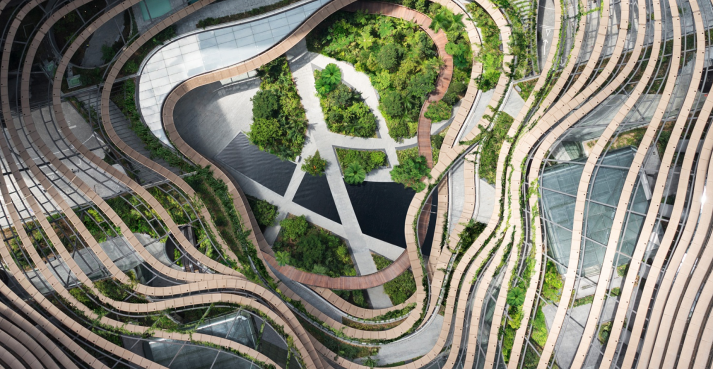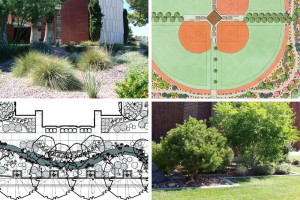Landscape Design Fundamentals Explained
Table of Contents9 Simple Techniques For Landscape DesignThe 9-Minute Rule for Landscape DesignRumored Buzz on Landscape DesignSome Known Details About Landscape Design
When developing a property landscape, the most crucial step is to place a plan on paper. Establishing a master plan will conserve you money and time and is a lot more likely to result in a successful design. A master strategy is established through the 'design process': a step-by-step approach that takes into consideration the environmental problems, your desires, and the elements and principles of design.The five steps of the layout procedure consist of: 1) conducting a website stock and analysis, 2) determining your requirements, 3) producing useful layouts, 4) creating conceptual design plans, and 5) attracting a last style plan. The very first 3 actions develop the aesthetic, functional, and gardening requirements for the design. The last 2 actions then use those demands to the development of the final landscape plan.
This is an essential action for both plant selection and positioning and finding household tasks and functions. It is very important due to the fact that the exact same climate conditions that influence the plantstemperature, moisture, rain, wind, and sunlightalso affect you, the user. The next action is to make a list of your requirements and desiresthis assists you establish exactly how your backyard and landscape will certainly be used.
The useful representation is after that used to find the activity areas on the website and from this representation a theoretical strategy is established. The last step is a final design that includes all the hardscape and planting information that are required for installment. Throughout the design procedure there are 10 vital points to consider: for plant option and activity location by considering what you want and require to aid establish forms and organize areas by assigning task areas and connecting with components for both the environment and the customer by utilizing massing and layering strategies such as change locations and focal points in the products, the colors, and the surface textures for the development and maintenance of plants by utilizing sustainable layout methods A detailed inventory and evaluation of the site is very important to identify the environmental conditions for plant development and the most effective use of the website.
Fascination About Landscape Design
The kind of dirt identifies the nutrients and wetness offered to the plants. It is constantly best to make use of plants that will thrive in the existing dirt. Although dirt can be amended, change is commonly costly and the majority of times ineffective. Existing plants can provide ideas to the dirt type. Where plants expand well, keep in mind the soil problems and utilize plants with similar expanding needs.

Sun/shade patterns, the amount and length of exposure to sun or shade (Number 1), develop microclimates (in some cases called microhabitats) - Landscape Design. Recording website conditions and existing plants on a base map will reveal the location of microclimates in the lawn. Plants typically drop right into one or two of four microclimate categories-full sun, partial color, shade, and deep color
Little Known Facts About Landscape Design.
Number 1. Sunlight and shade patterns. Credit Scores: Gail Hansen, UF/IFAS It is important to keep in mind all the status quo on an accurate base map when doing the site stock (Figure 2). Energies such as high-voltage line, septic tanks, underground energies and roof overhangs establish plant place. Utilize a land surveyor's plat of your building for the boundaries and place of your home.


Budget concerns include the materials, preliminary setup prices and the on-going upkeep expenses. Identify the time and money you are ready to take into keeping the plants and hardscape-be practical about your intents and capacity. Figure 3. Present use areas. Credit Score: Gail Hansen, UF/IFAS Figure 4. Suggested use locations. Credit: Gail Hansen, UF/IFAS There are several landscape design styles- from basic to complicated, yet it is handy to choose one to lead your plant and material option.
Many individuals find it practical to search in horticulture publications and books for ideas. This is an excellent beginning, yet understand that the gardens in the images were selected because they are exceptional examples. Consider the images with a vital eye to collect concepts that you can adapt to your passion level, your budget and your site.
Make a decision if you desire to open your yard, close your yard, or a little of both, to these views (Landscape Design). Simply put, do you desire the garden to confine the space around you and associate primarily to the residence, or do you want the yard to open sights and look outside, associating to the environments? This will provide you look at this site a beginning factor to consider a style
Landscape Design for Dummies
This is called "feeling of place", which implies it fits with the surroundings. There are both kind themes and design themes. Every yard must have a type style, however not all yards have a design motif. In truth, lots of household yards have no specific style except to mix with your home by repeating details from the architecture such as materials, color, and kind.
In a form motif the company and form of the rooms in the lawn is based either on the form of your home, the form of the locations in between the residence and the home limits, or a favored form of the home owner. The kind style establishes the shape and company (the design) of the areas and the links between them.
